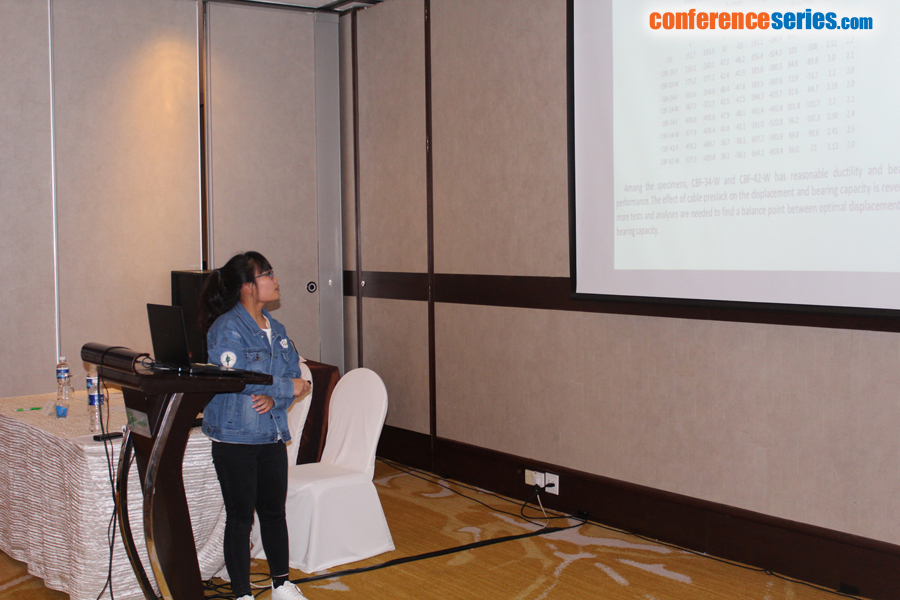
Zixuan Shang
Beijing University of Technology, China
Title: Seismic performance of prefabricated cable-braced steel frames
Biography
Biography: Zixuan Shang
Abstract
Given their superior performance, steel cables have been used in steel structures as braces, but the studies on this topic have not been sufficient. A new type of prefabricated cable-braced steel frame is proposed in this paper. To investigate the seismic performance of a prefabricated cable-braced steel frame, quasi-static tests and finite element analysis are performed on a pure steel frame and on four pairs of cable-braced frames. One frame exhibited no pretension and the other exhibited pretension in each pair. All of the frames were the same, while the cables included different cross-sectional areas among the four pairs. The analysis examines the hysteresis performance, bearing capacity, ductility, self-centering capabilities and failure modes of the four pairs of cable-braced frames and pure frames. The influence of cable cross-sectional areas on the cable tension, hysteresis performance, bearing capacities, ductility, self-centering capabilities and elastic-plastic development of the cable-braced frames is studied relative to the pure frame. The results of the tests and finite element analysis (FEA) are nearly uniform. The results indicate that cable-braced frames exhibit reasonable levels of hysteresis performance, energy dissipation and self-centering. A larger cable cross-sectional area enables superior self-centering capabilities and more pronounced levels of rigidity degradation. The energy dissipation capacity and displacement ductility initially increase followed by a subsequent decrease with increasing cable cross-sectional area. The influencing factors of lateral stiffness and the load-bearing mechanisms of cable-braced frames are revealed from a theoretical formula of lateral stiffness and from an analysis of bearing capacity and the influence of pretension on cable-braced frames are obtained.




